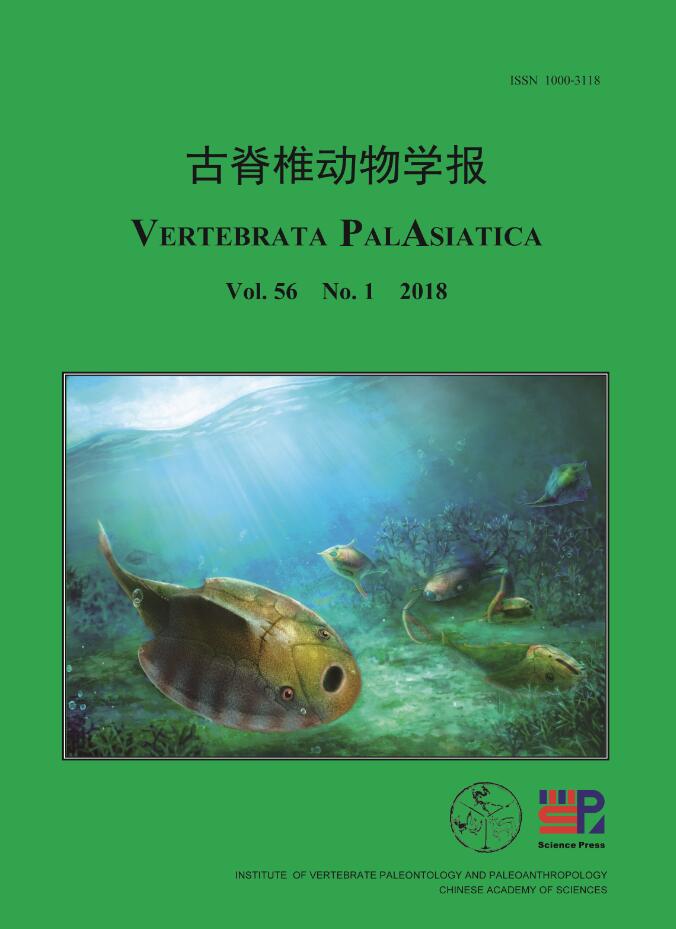

封面说明: 云南曲靖早泥盆世洛霍考夫期无颌类盔甲鱼生态复原图。该地区盔甲鱼物种多样性非常丰富。惠清驼背鱼(新属、新种) (Altigibbaspis huiqingae gen. et sp. nov.) 是西山村组最新发现的多鳃鱼目一新属种。驼背鱼与多鳃鱼非常相似,但前者头甲背面具有一特征性的驼背状隆起,其上具有一刀刃状的中背脊。中背脊和中背棘在盔甲鱼类里的多样性表明,它们除了能够提供方向稳定性外,可能还衍生出了一些附加的功能,例如直立高耸的中背棘能使盔甲鱼在捕食者眼里具有恐吓性的大小,刀刃状的中背脊可能也起到一些防御的作用,能够抵御当时的大型无脊椎动物板足鲎。图中惠清驼背鱼(前左)、小眼南盘鱼 (后右上)、张氏真盔甲鱼(右下)、双翼王冠鱼(后左中)与大型海蝎子板足鲎(后中) 共生在一起。板足鲎正在捕食廖角山多鳃鱼。详见刘玉海等人文 (p. 1)。(绘图:杨定华)
Cover image: Ecological reconstruction of galeaspids (Agnatha) in Qujing, Yunnan Province during the Lochkovian, Early Devonian. Galeaspids exhibit a high diversity in Qujing during the Lochkovian, Early Devonian. Altigibbaspis huiqingae gen. et sp. nov. is a new form of the Polybranchiaspiformes (Galeaspida) from the Xishancun Formation. The Polybranchiaspis-like new genus is characterized by a blade-like median dorsal ridge on the dorsal side of head-shield. The morphological disparity of the median dorsal ridge and spine in galeaspids indicates that some additional functions of these structures have been developed except for providing a directional stability. The high upright and compressed spine may render galeaspid fishes an apparently larger size as seen by a predator, and a blade-like median dorsal ridge may serve a defensive function against the claws of large sea scorpions. In the picture, Altigibbaspis huiqingae (front, left), Nanpanaspis microculus (back, right-up), Eugaleaspis changi (back, right-down), and Stephaspis dipteriga (back, left-middle) lived with the large sea scorpions eurypterids (back, middle). Eurypterids were preying on Polybranchiaspis liaojiaoshanensis. See details in the paper of Liu et al. (p. 1). (Illustrated by Yang Dinghua)